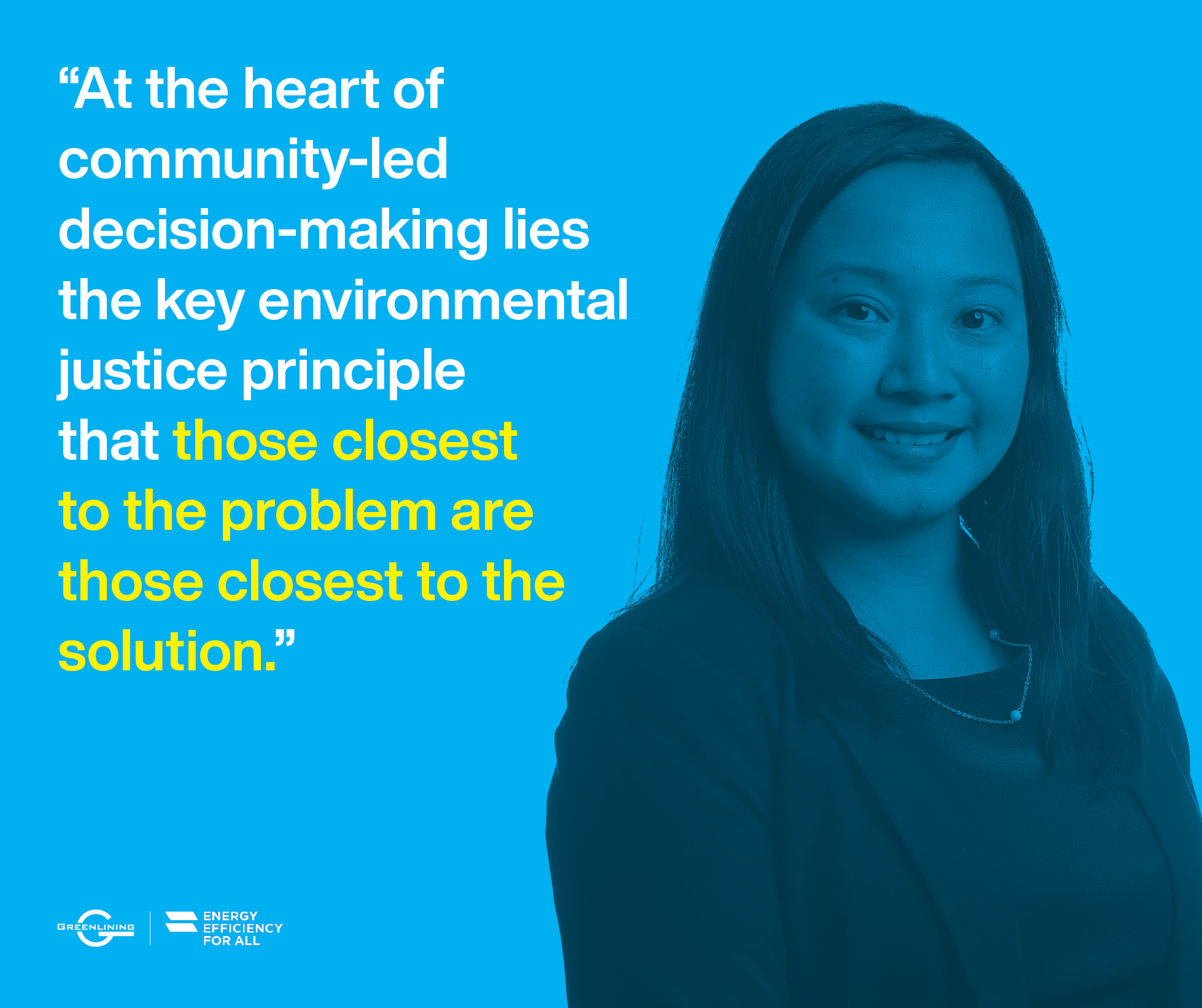Alexis Cureton, NRDC
Cross-posted from NRDC’s blog.
It is possible to equitably switch California homes to all-electric systems, cutting fossil gas use and improving our health, according to a groundbreaking report issued today. Equitable Building Electrification: A Framework for Powering Resilient Communities provides decision makers with a step-by-step guide to achieve the state’s goals of staving off the climate crisis while ensuring every Californian, regardless of race and income, benefits in the clean energy transition.
The pioneering report was published by the Greenlining Institute, which works for racial and economic justice, and the Energy Efficiency for All coalition (including NRDC) that strives to increase energy efficiency to make multifamily housing affordable and healthier.

Why do we need to electrify?
In addition to California’s numerous climate laws to cut energy use and clean up the grid, Governor Jerry Brown committed the state to achieving carbon-neutrality by 2045. These goals require dramatic shifts away from fossil fuels, including cutting the use of fossil gas in our homes and businesses. The technology to do this already exists and is lower cost in many parts of California, but will require a big huge push to get these technologies into homes across the state.
Gas used in residential and commercial buildings is responsible for 25 percent of the state’s climate-warming greenhouse gas emissions. That makes electrification (shifting from using gas appliances to those that are powered by clean electricity) an important strategy in meeting California’s climate goal and in the process save developers, home owners, and renters upfront and operating costs. Luckily, California is not alone in this effort. In fact, there is a global effort to eliminate carbon emissions in buildings, including countries like Netherland and Ireland as well as a host of cities, including the nearly 50 cities in California that are looking to shift away from using gas in new construction.
The use of appliances that burn gas inside buildings for heating and cooling also has major public health impacts. Fossil gas releases nitrogen oxides and particulate matter that can have serious, long-term health impacts—including asthma and other respiratory illnesses.
Why do we need a just and equitable transition from gas?
The report notes that previous clean energy initiatives — like rooftop solar and energy efficiency programs — largely benefited upper-income Californians and the failure to sufficiently reach those with lower incomes has created significant distrust in many communities. Their residents are predominantly people of color or living on low incomes; underrepresented in policy and decision-making processes; subject to disproportionate impacts from environmental hazards; and likely to experience disparate implementation of environmental regulations and socioeconomic investments.
As the gas system ages, it becomes more expensive to operate and these expenses are passed on to utility customers, including low-income people who already pay a significant portion of their limited incomes for energy. Since the publishing of the report, new data show that utilities are collecting far more than 7.5 billion — it’s actually $14 billion — per year to fund ongoing operations, maintenance costs, and gas infrastructure replacement and expansion. Those expenses will climb greatly in the coming decade due to growing demands on the energy system, necessitating major rate increases. Without ensuring strong energy efficiency upgrades and a thoughtful transition, this could translate into higher customer bills, the report says.
In addition, as customers leave the gas system, the utilities will have to recover their fixed costs (the cost that don’t change depending on how many people are on the system) from fewer people reliant on the gas infrastructure. This means each renter, homeowner, and building owner still using gas will pay much more than today. If history is a predictor of the future, without very specific smart policies and targeted programs designed with community input, the remaining customers will most likely be from low-income communities, unable to make the shift to electric appliances without help.
This multi-pronged issue could spiral out of control given that California is experiencing the nation’s worst housing affordability crisis, which is leading to increases in racial segregation. The shift to electrification should not exacerbate the already widening gap between the supply of — and demand for — affordable housing. Affordable housing owners cannot be expected to prioritize electrifying their buildings if they do not have enough cash reserves or operating income to cover such costs. Incentive programs will need to be created to help affordable housing owners cover the costs of electrification.
What are the benefits of electrifying?
Focusing thoughtfully on lower-income communities will have wide-reaching benefits: helping reduce wealth disparities by ensuring residents can reap the benefits of a more efficient home with equipment that relies on electricity. When done right, the new system will provide greater comfort and cost less, removing the difficult choice many of these residents face – pay to keep the lights and heat on – or pay for food.
Shifting to cleaner sources of electricity to cook our food and heat our homes also improves indoor and outdoor air quality. These homes will be healthier and safer, making the quality of life better for these residents.
In addition, there will be a growing need for skilled labor to install the efficiency upgrades to ensure the building doesn’t leak even before bringing in workers to install new electric equipment. This presents a great opportunity to link such jobs to disadvantaged communities getting the upgrades. Policies must be designed to ensure these jobs are high-quality (e.g., they provide family-sustaining wages, benefits, and career pathways) and are accessible to people from these communities.
How can this transition be done equitably?
The report makes several policy recommendations for moving to electric homes and highlights the importance of community participation in policy planning. It lays out five key steps – each with guiding questions – to help decision makers design an equitable path to electrification.
- Assess community needs: Before making decisions, connect with the communities that will be impacted from the policies or programs. Set equity indicators that will track whether implementation of identified economic and health opportunities are successfully targeted to communities who have historically been left behind and often bear the brunt of environmental pollution.
- Integrate communities into decision-making: Establish a community-led decision-making process to gain community input and engagement, improve local buy-in, and guarantee that the final program meets the actual needs of the community.
- Measure success: Be proactive in establishing ways to keep track of progress. Develop metrics for assessing the effectiveness of building electrification efforts beyond energy savings and other benefits, such as health and economic development.
- Sufficiently fund programs: To be most successful, programs should be designed to align with and leverage other opportunities (e.g., affordable housing and workforce efforts) and be well-funded to reach intended goals.
- Evaluate progress: Make sure there are reporting and evaluation requirements baked into program design to not only improve upon program elements as they are being implemented but also to measure the final outcomes and areas of improvements.

What’s next?
Beneficial and equitable building electrification is an important next step in California’s efforts to curtail greenhouse gas emissions. As policymakers consider how best to implement strategies that shift household uses to electric appliances, it is vital that they use this guide to avoid the past mistakes of ignoring the needs of communities and to prevent them from falling even further behind in the clean energy transition.
California has an opportunity to chart a different, racial equity-focused path with electrification to show the world that achieving the goals of cutting dangerous climate pollution and providing opportunities for the most vulnerable populations is possible and a precedent that needs to be set.
Issue
Advancing Equitable PoliciesLocation
CaliforniaTopic
Energy equity Energy policy Energy efficiency Equity Racial equityKeywords
electrification

